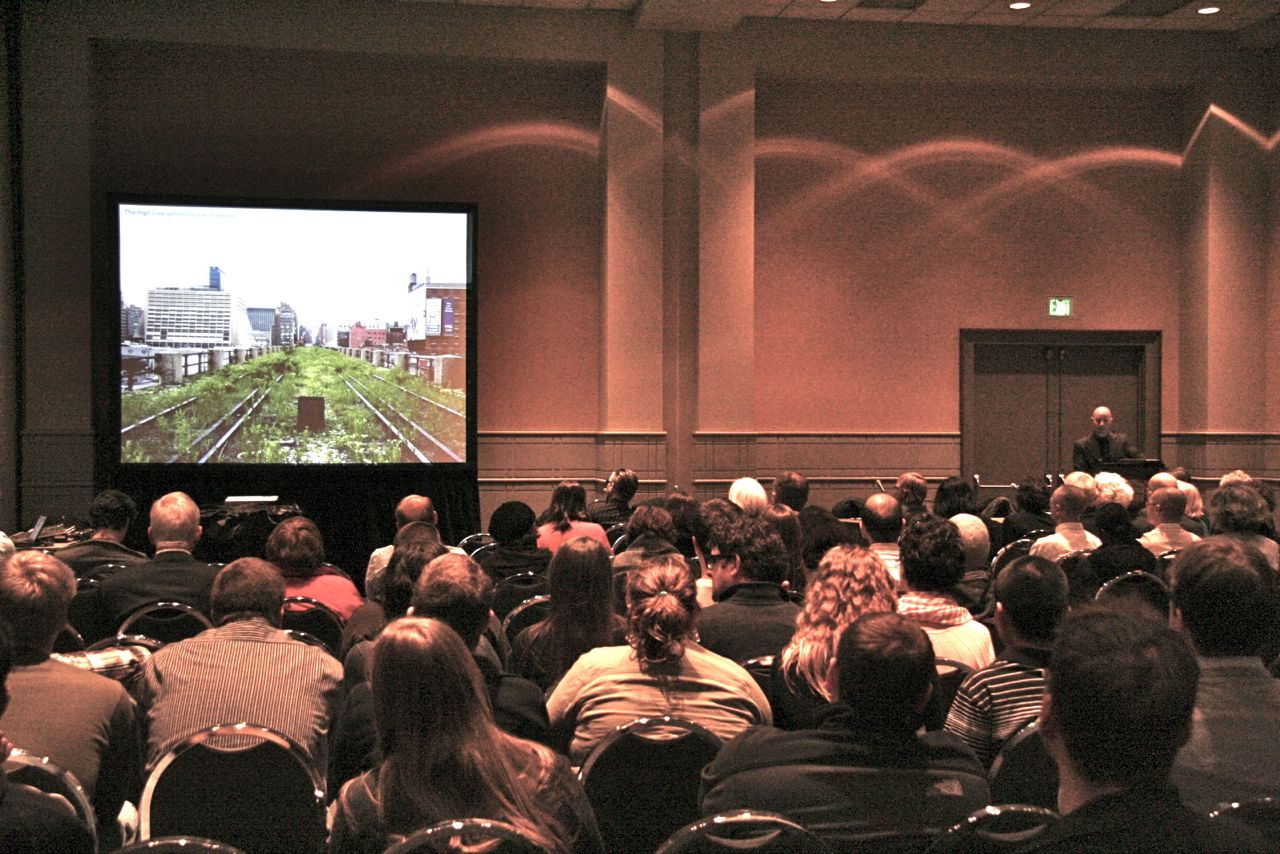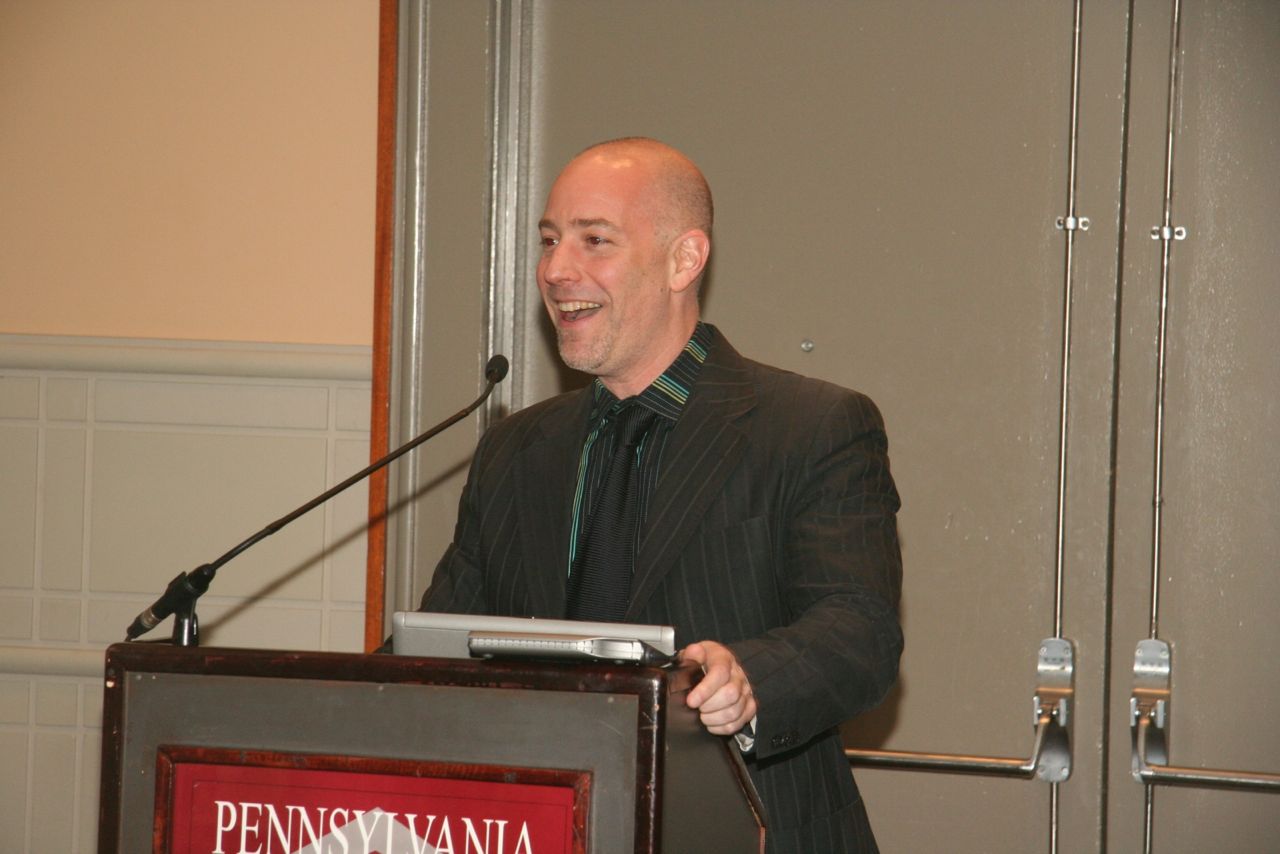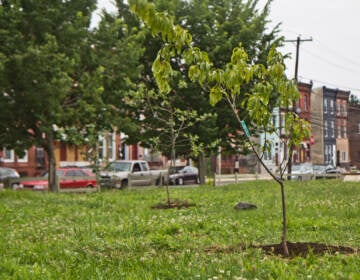Lessons from other cities’ civic landscaping projects
The oohs and ahhs were many at last night’s panel discussion at the Philadelphia International Flower Show, “Transforming Public Landscapes,” one in a series of evening presentations by what Pennsylvania Horticultural Society president Drew Becher called, the “rock stars of the landscape world.”
Susan Weller, of Olin Partnership, drew admiring gasps with her slides of a redesigned Dilworth Plaza. And Lynden B. Miller, director of the Central Park Conservancy, offered a few drab views of the upper park’s Conservatory Garden, then showed off how it looks today, a respite of formal gardens in East Harlem.
But, as is usually the case in matters of urban landscaping, it was Chicago that served as the most exciting inspiration. Doug Hoerr — the landscape architect most associated with a simple but game-changing development: the greening of Michigan Avenue’s medians — described how he got involved with the project 18 years ago. Back then, he said, “the only color on Michigan Avenue was the [yellow] striping on the roads.”
Terming this a “grand experiment of public horticulture in the middle of the street,” Hoerr elaborated that he “wanted horticulture that was big enough, robust enough that it held its own against the architecture of the City of the Big Shoulders.” As other presenters also emphasized, he added, “dollar for dollar, nothing is cheaper or more powerful than public horticulture.”
Becher has made improving Philadelphia’s civic landscape in this manner a central goal of PHS, and the panel he assembled was happy to provide success stories in their own cities. Charles Birnbaum, founder and president of the Cultural Landscape Foundation, proved a thoughtful and able moderator. He introduced the topic by offering a slide of Helen Frankenthaler’s color field masterpiece, Nature Abhors a Vacuum, in the collection of the National Gallery of Art.
The painting had served as inspiration for landscape architect James Van Sweden while designing Evening Island, a prairie garden at the Chicago Botanic Garden, Birnbaum explained, and was a reminder of the importance of ‘design intent’ while considering such spaces. Spaces like this, Central Park’s Great Lawn, and New York’s High Line, Birnbaum continued, “all have great bone structure, and are not just about pretty plants.”
Weller took the podium first, beginning her presentation with a look at some of the recent re-greening efforts on the Benjamin Franklin Parkway (including the coming Rodin Museum rejuvenation, and landscaping outside of the new Barnes Foundation). She ran through Olin’s work in creating a green roof atop a new parking lot at the Philadelphia Museum of Art, before moving onto the Dilworth Plaza proposals. The plaza’s newly-announced public art component — which will shoot colored plumes of mist along lines that echo the trajectory of the subway and trolleys underground — was a real crowd-pleaser.
Ken Smith, who’s been dubbed one of a ‘new generation’ of landscape architects and who is perhaps best known for his rooftop garden at New York’s Museum of Modern Art, next offered a look at his project along defunct rail tracks in Santa Fe. In an adaptation of Native American practices, one element included a ‘waffle garden,’ small plots of land that were flooded then planted with pinyon pines, native oaks, and some showcase flowers such as roses and hollyhocks.
When Hoerr spoke next he made a point that native this and sustainable that were all well and good, but that “it’s okay to use beautiful things,” too. “Not every project [needs to] be the packing horse for sustainability,” he added later.
Christy Webber, a Chicago-based design/build landscape contractor next spoke about her role in the process, using her firm’s installation of the landscape element in Millennium Park as an example. She got the evening’s biggest laugh when she spoke of how the landscape architect Kathryn Gustafson greeted her with the command, “don’t f#%k with my design,” upon their first meeting. She also showcased her work at a public high school in a West Side neigborhood where the “sound of gunfire was heard more than that of birds.”
From a concrete expanse to a rudbeckia-filled swath, the schoolyard had been transformed into a “savannah in the Midwest,” she said.
Before giving the floor over to questions from the audience, which included professionals seeking continuing education credits as well as students in landscape programs from Philadelphia University and Temple at Ambler, Birnbaum asked the panel to share any lessons they’d learned in getting elected officials to support these projects.
“I come at it from an economic development standpoint,” said Hoerr. “Horticulture is a cheap date,” offered Miller. “You have to show them what can be done,” she added later.
Contact the reporter at jgreco@planphilly.com
WHYY is your source for fact-based, in-depth journalism and information. As a nonprofit organization, we rely on financial support from readers like you. Please give today.






